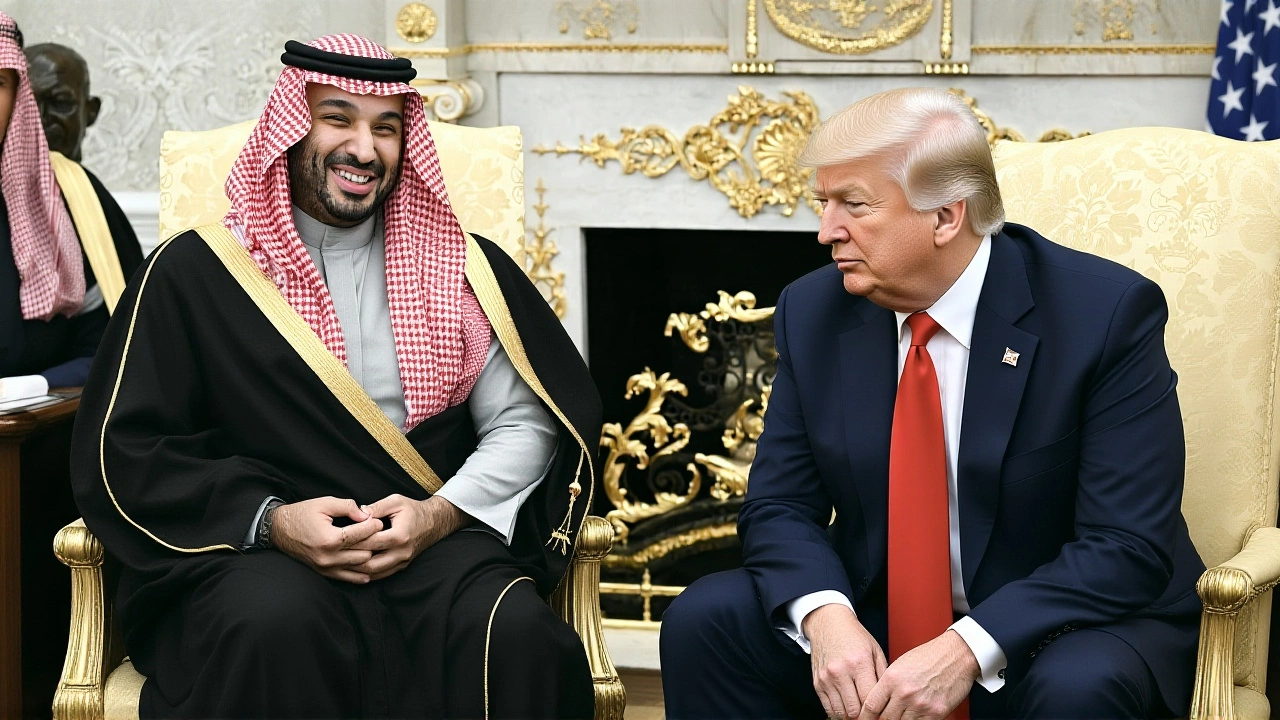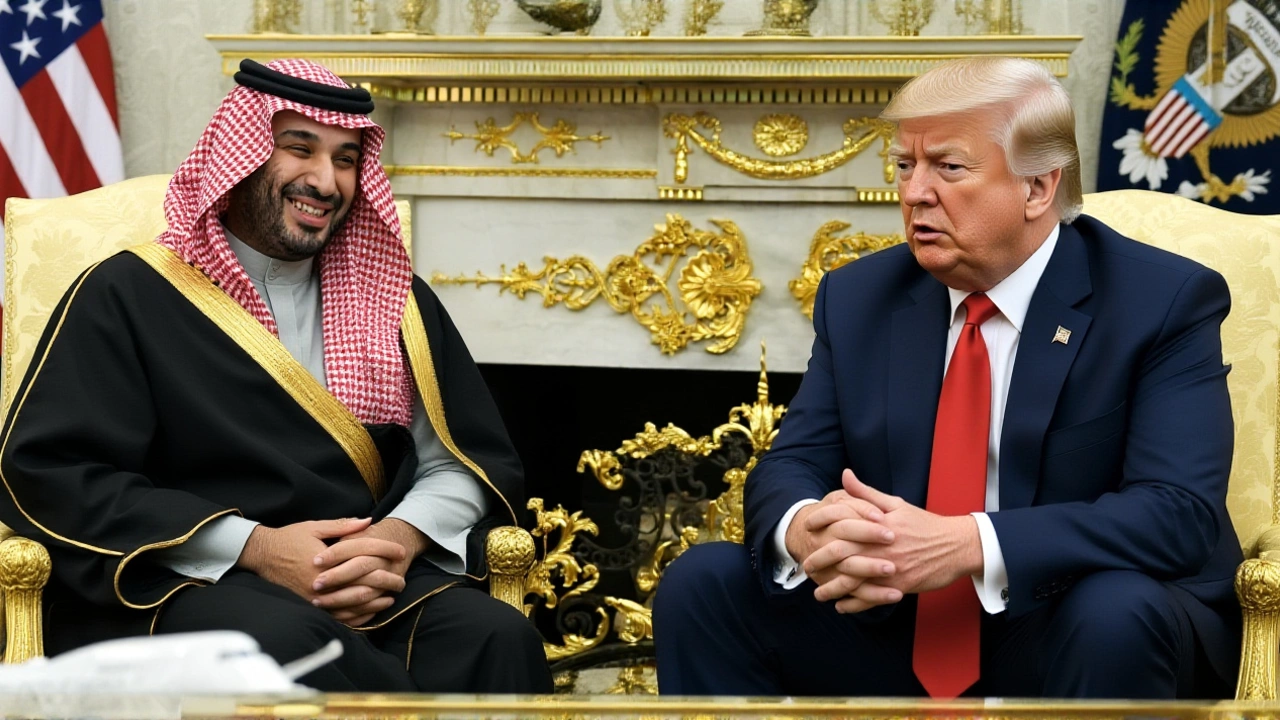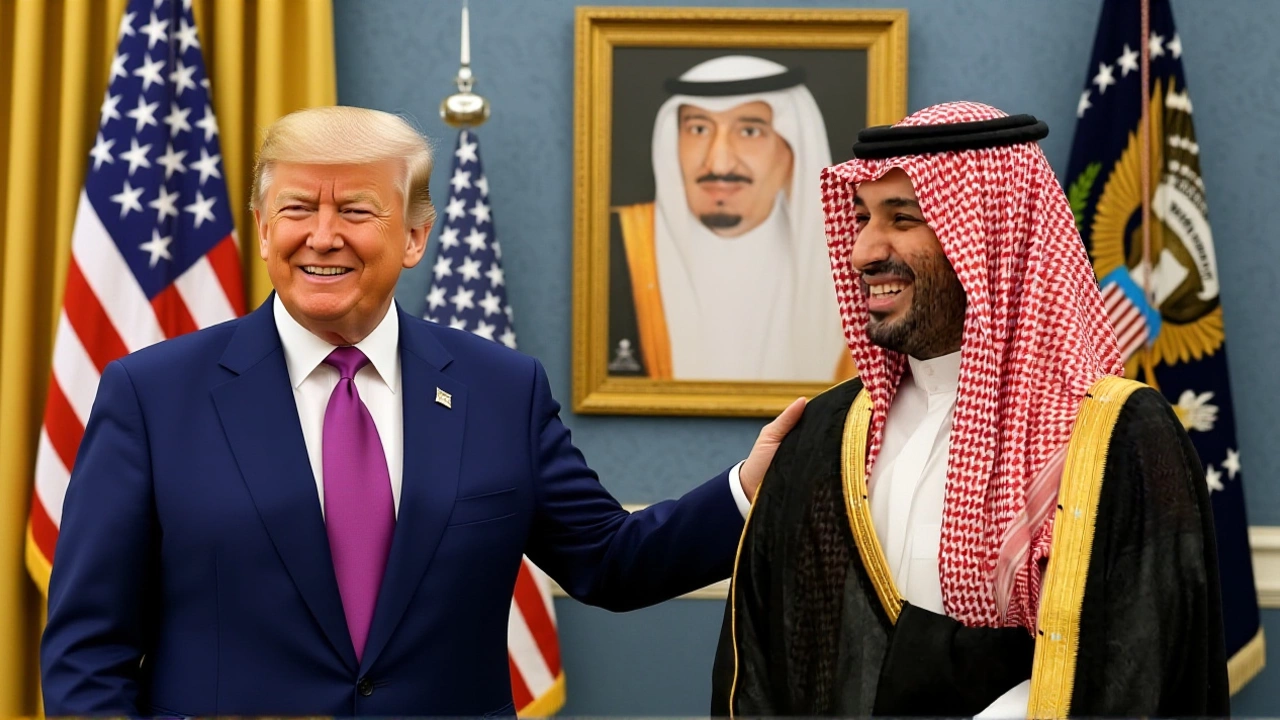Trump and Saudi Crown Prince Seal $1 Trillion Investment Deal and Historic Defense Pact
On November 18, 2025, Donald J. Trump welcomed Mohammed bin Salman, Crown Prince and Prime Minister of the Kingdom of Saudi Arabia, to the White House for a high-stakes visit that reshaped the future of U.S.-Middle East relations. What began as a ceremonial arrival ended with two landmark agreements: a U.S.-Saudi Strategic Defense Agreement (SDA) and a pledge of nearly $1 trillion in Saudi investment in the United States — a staggering leap from the $600 billion committed just six months earlier in Riyadh. The timing wasn’t accidental. With global oil markets in flux and AI-driven defense systems accelerating, this wasn’t just diplomacy. It was a strategic pivot.
A New Chapter in U.S.-Saudi Defense Ties
The U.S.-Saudi Strategic Defense Agreement, signed during a private meeting in the Oval Office, formalizes what had long been an unspoken understanding: Saudi Arabia will now shoulder more of the financial burden for regional security, while the U.S. gains guaranteed access to Saudi infrastructure for military logistics and joint R&D. For the first time, the agreement includes direct funding from Riyadh to support U.S. troop rotations in the Gulf — a move the White House called "a win for the America First agenda."
Perhaps the most visible component is the approval of future F-35 fighter jet deliveries to Saudi Arabia, a deal long stalled under previous administrations over human rights concerns. This time, the White House emphasized that Saudi Arabia would receive the latest Block 4 variant — with embedded U.S. cybersecurity protocols and restricted software access — ensuring American control over critical systems. "This isn’t about selling weapons," said a senior defense official anonymously. "It’s about locking in a long-term industrial partnership. Every jet built for Riyadh means jobs in Fort Worth, Arizona, and Connecticut."
$1 Trillion in Investment: More Than Just Money
The investment pledge dwarfs anything seen since the 2017 Riyadh visit. But this isn’t just about cash. The Kingdom of Saudi Arabia is committing to direct capital into U.S. critical minerals mining, nuclear energy projects, and AI data centers — sectors where American firms have struggled to compete globally. The White House fact sheet specifically highlighted partnerships with Bechtel, Westinghouse, and Palantir to build AI-powered defense logistics hubs in Texas and Nevada, funded by Saudi sovereign wealth capital.
"This isn’t a donation," noted economist Dr. Lena Ruiz of the Peterson Institute. "It’s a strategic equity stake. Saudi Arabia is buying influence, yes — but it’s also buying technology transfer, supply chain integration, and a seat at the table for future energy transitions."
President Trump made the emotional case during the U.S.-Saudi Investment Forum on November 19, 2025, in Washington D.C., where he publicly called the Crown Prince "a very good friend." The remark, captured on live feed by Defense Now, drew immediate reactions from both allies and critics. "It’s unusual for a U.S. president to use that language with a foreign leader," said former National Security Advisor Susan Hargrove. "But it signals trust — and that’s what makes this deal stick."

Why Nuclear and AI Matter More Than Jets
Beneath the headlines of fighter jets and billions, the real game-changer lies in two quiet but explosive areas: nuclear energy and artificial intelligence.
The SDA includes a framework for Saudi Arabia to co-develop small modular nuclear reactors with U.S. firms — a move designed to reduce its reliance on oil for electricity while freeing up crude for export. The U.S. will provide enriched uranium fuel under strict IAEA safeguards, but Saudi Arabia gains access to American reactor design patents. That’s a quiet revolution in energy sovereignty.
Equally significant is the joint AI initiative. The two nations agreed to establish a Defense AI Research Center in Riyadh, staffed by U.S. engineers and Saudi scientists. Its mission: develop autonomous surveillance systems for the Red Sea and Persian Gulf, with data shared in real-time between U.S. CENTCOM and Saudi military command. "Think of it as a digital NATO for the Middle East," said one Pentagon insider.
The Ripple Effects
Already, Wall Street is reacting. Defense stocks surged 4.2% the day after the announcement. The S&P 500 defense index hit a record high. Meanwhile, in Riyadh, the Saudi stock exchange closed up 5.8%, its biggest single-day gain since 2023.
But the political fallout is more complex. Israel, long wary of Saudi normalization, received a quiet assurance from Washington that the SDA does not preclude future peace talks. "The U.S. made it clear that normalization with Israel remains a separate, parallel track," said a State Department source. "But this deal makes it easier for Riyadh to say yes later."
China, meanwhile, watched closely. Beijing had been courting Riyadh with its own infrastructure deals. Now, with the Saudis locking in trillions in U.S. capital and technology, China’s influence in the Gulf may be in retreat — at least for now.

What Comes Next?
The White House says implementation begins immediately. Defense contracts worth $18 billion are expected to be awarded within 30 days, with nuclear and AI joint ventures to be formally announced by mid-December. A ministerial meeting is tentatively scheduled for February 2026 in Jeddah, where U.S. Treasury and Energy officials will meet their Saudi counterparts to finalize funding structures.
For American workers, the stakes are clear: over 120,000 new jobs are projected across manufacturing, engineering, and cybersecurity by 2030. For Saudi Arabia, it’s about survival — diversifying away from oil before the world moves on.
And for Trump? It’s his most consequential foreign policy achievement since his first term — a deal that blends hard power, economic leverage, and personal rapport in a way few presidents have managed.
Frequently Asked Questions
How will the $1 trillion investment actually reach American workers?
The funds are being channeled through sovereign wealth investments in U.S.-based infrastructure, not direct cash transfers. Key sectors include nuclear energy (Westinghouse reactors), AI data centers (Palantir and Microsoft partnerships), and critical minerals mining (Bechtel-led projects in Nevada and Texas). These projects require American labor, materials, and engineering oversight — creating an estimated 120,000 jobs by 2030, primarily in manufacturing and skilled trades.
Why is the F-35 sale controversial, and how was it approved this time?
Past administrations blocked F-35 sales over human rights concerns tied to Yemen and Jamal Khashoggi’s killing. This time, the White House imposed strict software controls, restricted access to targeting systems, and tied the sale to Saudi commitments on labor reform and AI transparency. The deal includes mandatory U.S. audits of Saudi military procurement — a condition not offered in previous agreements.
Does this deal affect U.S. relations with Israel?
Israel was briefed privately and has not publicly objected. The U.S. made clear that normalization between Saudi Arabia and Israel remains a separate diplomatic track — but the defense pact removes a major Saudi obstacle: the fear of being isolated. With U.S. security guarantees now locked in, Riyadh may feel more confident moving toward peace talks, especially as Iran’s nuclear ambitions escalate.
What role does nuclear energy play in this agreement?
Saudi Arabia aims to replace 20% of its oil-generated electricity with nuclear power by 2035. The U.S. will supply small modular reactors (SMRs) and enriched uranium fuel under IAEA safeguards, while Saudi firms gain access to American reactor design patents. This reduces Saudi dependence on oil exports for domestic power — freeing up more crude for global markets and aligning with U.S. energy export goals.
How does this impact China’s influence in the Middle East?
China had been building economic ties with Saudi Arabia through its Belt and Road Initiative, especially in ports and 5G infrastructure. But this $1 trillion U.S. deal — tied to high-tech sectors and defense integration — shifts the balance. Saudi Arabia now has deeper access to American innovation than Chinese alternatives. While Beijing still holds sway in trade volume, Washington now controls the future tech pipeline — a strategic advantage China can’t easily match.
What happens if Trump loses the 2028 election?
The agreements are legally binding through executive orders and multi-year contracts, not treaties — so they’re harder to reverse. The F-35 sale and nuclear framework are already under contract. The investment commitments are tied to private Saudi sovereign wealth funds, not government pledges. While a future president could slow implementation, unwinding the deals would trigger massive financial penalties and damage U.S. credibility with global investors.





